


Tags : Theoretical Physicist, Relativity, Photoelectric Effect, Quantum Theory, Particle Theory
- Text Size +
Why? What? How? Questions, questions and questions … the seed is sown with the questions thrown. How did the universe come into being? From where? And why? How is a shadow formed? What is electricity? How does sound travel? How do birds fly? How does an airplane fly? Why does food cook faster in a pressure cooker than in any regular utensil? Why does the grass turn brown in summer? Why do stars twinkle? What is air? How does the balloon soar high? Indeed…Why? What? How? Questions unlimited…
Questions arise due to our curiosity, the wonder and amazement at everyday miracles…answerable only by science; the field that observes, identifies, investigates and explains the phenomena theoretically and with experiments. Science has an explanation for almost everything; it has invaded every aspect of our life, whether at home or outside. It has revolutionized the life of man and technological advancement has changed the face of the world. The fascinating world around us stretches and stretches into space…infinite magnificent space. In this infinite space around us, are billions of living and non living things. The mysteries that abound in this great space are so large that it makes us feel overwhelmed. We are truly lucky that many great scientists have been motivated to do in-depth researches on various subjects in the diverse fields of science. Their inventions and discoveries have made life pleasurable and easy. Thanks to them, the whole concept of living has changed.
The last two centuries have been exceptionally rewarding in terms of technological advancement. Many scientists have contributed their knowledge to the development of mankind. One such great man who revolutionized the entire world with his theories was Albert Einstein. A brilliant scientist and able philosopher, Einstein was always determined to extract nature’s many secrets. His sustained and systematic effort towards his passion has resulted in great strides in the world of Science. Advocating his policy of never giving up, he himself has said,
“I think and think for months and years. Ninety-nine times, the conclusion is false. The hundredth time I am right.”
Albert Einstein revolutionized scientific thought with his theories. According to him, “The grand aim of all science is to cover the greatest number of empirical facts by logical deduction from the smallest number of hypotheses or axioms.”
Einstein is well-known for the famous theory of relativity that he gave to the world. But there is more to him than just that. His theory did create a major revolution in Physics, earning him the title of “The Father of Modern Physics”, but he is also historically linked with three very important developments of the 20th Century – the birth of nuclear weapons, Germany’s rise into power and the growth of Zionism (a political movement to establish an independent Jewish homeland in Israel). He earned world-wide fame in his lifetime and became the most influential physicist of the 20th century.
This German-born American theoretical physicist’s life and work will always continue to be the subject of research work. Every aspect of his science will continue to be analyzed and thesis written on them. The impact of his support for pacifism, his honest enthusiasm for Zionism, and his Cosmic religion will all beget detailed analyses over and over again. The man who gave us the world-famous theory of relativity and the eternal formula of mass-energy equivalence E = mc2 had this to say:
“Concern for man and his fate must always form the chief interest of all technical endeavors. Never forget this in the midst of your diagrams and equations.”
Come, let us proceed to examine the life of this great legend and find out what made this brilliant scientist such a think tank of genius.

Albert Einstein’s father, Hermann Einstein was born in Buchau but had moved to Ulm, an old city on the Danube, lying in the foothills of the Swabian Alps. His mother Pauline was born in Cannstatt; a few miles away from the town of Ulm. Hermann married Pauline on 8th August, 1876 in Cannstatt. Pauline Koch was the daughter of a Stuttgart grain merchant and court purveyor, and was eleven years junior to her husband. She had a love for culture, literature and music.
Pauline and Hermann Einstein spoke the soft Swabian dialect and were a devoted happy couple. The young German Jewish couple lived in Buchau for a year and then in the year 1877, they went back to Ulm. In Ulm, Hermann set up a small electrical and engineering workshop with financial help from his in-laws. The couple lived a few yards away in an apartment in a four-story building. Here in this town of Ulm, in the Kingdom of Wurttemberg in Germany, where the inhabitants now proclaim, “Ulmense sunt mathematici” (the people of Ulm are mathematicians), was born the irreplaceable genius called Albert Einstein, on 14th March, 1879.
Hermann’s business failed a year later, so he moved with his family to Munich, the capital of Bavaria, in June 1880. Munich was quite a change from the rural environment of Ulm, and was a beautiful city rich in art galleries and churches. Hermann Einstein and brother Jakob ran ‘Elektrotechnische Fabrik J. Einstein & Cie’, their business of manufacturing electrical equipment in a small factory which they built in buildings, a little further from their new home. Hermann managed the business which was based on direct current while Jakob looked after its technical aspects. The family business prospered, prompting the Einsteins to move from their small rented house to a bigger home in the Sendling suburb. Albert’s sister, Maria, called as Maja was born in Munich on 18th November, 1881. Albert and Maja shared a very close relationship throughout their lives.
Hermann Einstein was a happy-go-lucky and optimistic man. He liked to go on family outings after his work on Sundays. His favourite haunts were the beautiful and romantic lakes and mountains in Munich, and the comfortable and pleasant Bavarian taverns. Little Albert enjoyed these Sunday excursions with his father and found him “exceedingly friendly, mild and wise.”
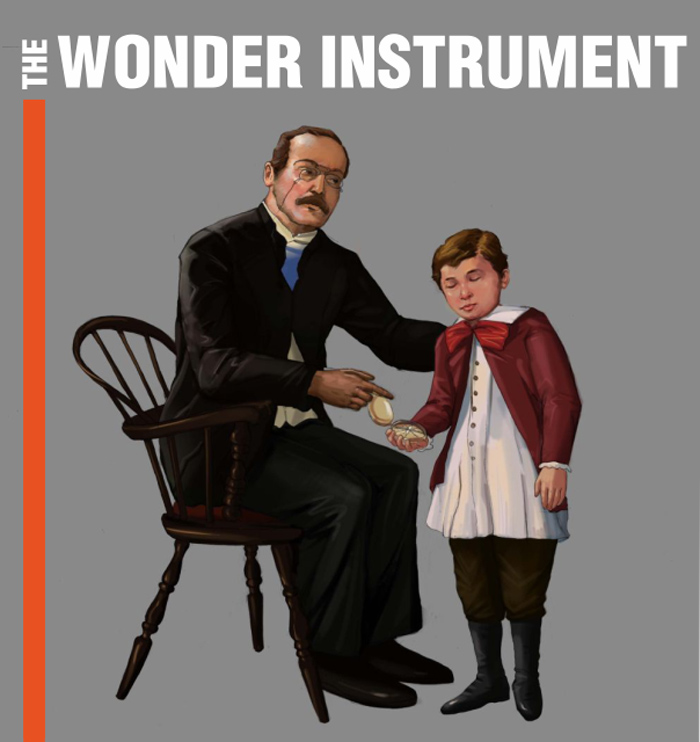
Until the age of 3, Albert Einstein scarcely talked. However, he crossed the other developmental milestones in his life without any difficulty. When he was 5, Albert got private lessons from a tutor for some time, as preparation for later school. One day, his father showed him a magnetic compass. Albert held it in his hand and saw that the needle pointed towards North when he stood still. He went into another corner of his room, stood still and looked at the compass – again it swung northward! He went out of his room into the verandah and stood stable. The rotating needle became still and once again pointed northwards.
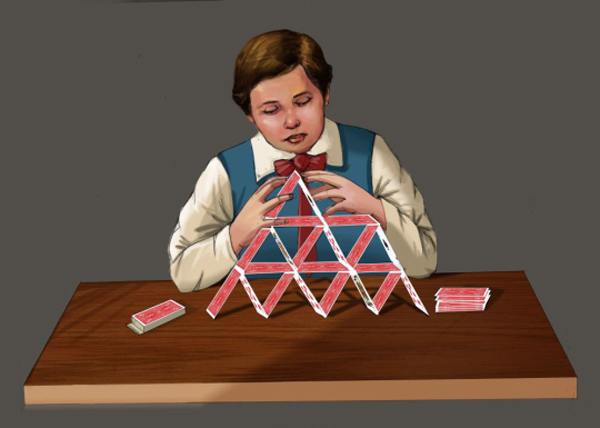
Amazing! Albert was stupefied. He thought in his little mind, “Why is it that the needle always points northwards? There is nothing inside the compass except some vacant space. Then what makes it behave so?” It was as if the needle was guided by an invisible force. In Albert’s young mind, the instinct that there was “something behind things, something deeply hidden” took root. The questioning attitude was thus born.
Albert as a little boy was very thoughtful, an extremely slow talker and always paused to think before speaking. With a lot of concentration, he would build houses of cards and even if they kept falling, he would persevere in building them again.
There were three early influences in Albert’s life – his father’s compass incident, his mother’s insistence on music lessons for him and Uncle Jakob, who would always say, “Algebra is a merry science. We go hunting for a little animal whose name we don’t know, se we call it x. When we bag our game we pounce on it and give it its right name". Albert’s later years were to prove the long-lasting effect that Uncle Jakob had, in making study attractive for him.
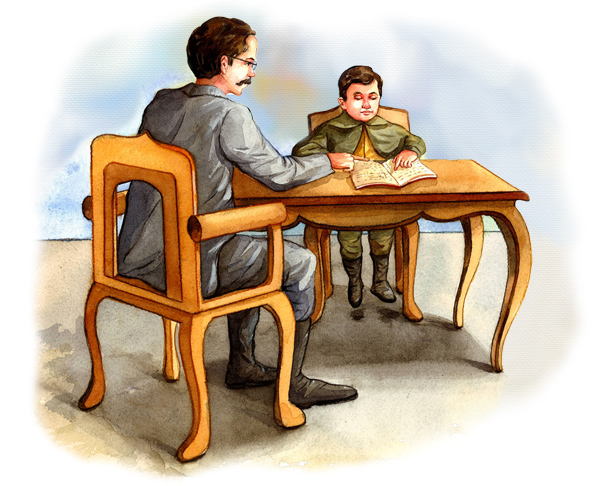
Besides his father, mother and Uncle Jakob, there was Uncle Casar Koch, Pauline Koch’s brother who was a loving influence on the young Albert. Uncle Casar Koch, a well-off grain merchant, lived in Stuttgart and his visits to the family were eagerly awaited. Once when Uncle Casar Koch returned from Russia to Germany in January 1885, he brought a model steam engine which he presented to Albert Einstein during a visit to Munich the same year.
In October 1885, from the age of 6, Albert began attending “Petersschule”, a catholic elementary school in Munich. Albert’s mathematical ability grew and he began building mechanical models for the fun of it. Besides getting lessons in Jewish religion at home, he also began to learn the violin. Initially, he learnt by rote without any understanding of the structure of music but with passage of time his love for the violin grew and he began enjoying it.

After his elementary education, from October 1888 till 6 years after, Albert went to the “Luitpold-Gymnasium” (grammar school), also in Munich. He was still introspective, slightly backward and his shyness made him keep to himself. A conservative outlook prevailed in Luitpold-Gymnasium which meant that the old school of thought was to be accepted and followed. This aggravated Albert’s skepticism since new ideas were not open for discussion or acceptance. However, Albert retained his opposive and questioning attitude to the many assumptions taken for granted by most people and the rote learning that was followed. He disliked the rote method of learning which stifled the freedom of the students to use their own imagination and inquiring nature. Though an “average” pupil, Albert’s probing and inquisitive nature were virtues essential and valuable for any scientist or physicist, since the new phenomena discovered with the help of advancement in technology did not fit in the existing order of things. In a way, Luitpold-Gymnasium was instrumental in making Albert realize the futility of learning without understanding. His understanding and questioning nature in a way, definitely helped him later on in arriving at the special theory of relativity at an early age.
In 1889, Max Talmud (later: Talmey), a poor Jewish medical student from Poland, was invited by the Einstein family to have his Thursday evening meals at their home. Albert Einstein was initially influenced on to his life path by Talmey who became his informal tutor. This was because, during his interactions with Albert, Talmey realized that he had an inclination towards Physics and gave him the then two popular works, A. Bernstein’s “Popular Book on Physical Science” and L. Buchner’s “Force and Matter”.
The book0073 impressed Albert remarkably, especially that of Bernstein, which contained clear descriptions of physical phenomena. Later, when Albert became interested in Mathematics, Talmey gave him a popular textbook, Spieker’s “Lehrbuch der ebenen Geometrie”.
Albert completed practicing the Mathematics from Spieker’s book within a few months. He loved to study Geometry; it was another wonder for him. After this, he worked on Lubsen’s higher mathematics, gaining mastery in calculus for problem solving in Physics and Engineering. His mathematical genius flew even higher than Max Talmey. When later he became interested in philosophy, Talmey recommended Immanuel Kant’s works. Albert was only 13 years old then, but he understood all of Kant’s works, which were otherwise difficult to comprehend for the layman. He read Kant’s “Critique of Pure Reason” and also the works of many other philosophers. For Albert Einstein, Immanuel Kant became his favourite philosopher. Albert, during this time, also did not go for his “Bar-Mizwa” (to become a full member of the Jewish community), for by then he had started to become a freethinker. His family members too, were non-observant Jews.

Albert was very intuitive, hence science, especially the inanimate world of Physics, was always on his mind. One day, flocks of emigrating birds were flying high above in the sky, as he stood watching them with a friend. Nothing new for us – birds fly after all! But what do you think was Albert’s reaction? – “I think it is easily possible that they follow beams which are so far unknown to us.” Oh, of course, we were just not tuned in to the physics of it all!
By this time, Albert also developed a good ear for music. Though he did not enjoy it much initially, his outlook towards music changed when he discovered Mozart’s (a prolific and influential composer of the Classical era) violin sonatas at age of 13. He got hooked and fell in love with the music. He practiced systematically since according to him, “Love is a better teacher than a sense of duty.”
While Albert was at the Luitpold-Gymnasium, the family business failed once more. From Munich, the Einsteins went to Milan in Italy in 1894 taking Maja, their daughter with them. Albert was kept in a boarding house under a distant relative’s care. However, he was very soon expelled from Luitpold-Gymnasium on the grounds that ‘your presence in the class is disruptive and affects the other students.’ This hurt Albert deeply - the ignominy of being sacked and not getting the necessary diploma stayed with him throughout his life. This perhaps explains why he spoke of Luitpold-Gymnasium with dislike in his later years. So, at the age of 15 years, Albert left Luitpold-Gymnasium in December 1894. The school however taught him to have self-discipline, concentration and relentless dedication to an ideal. The single-minded dedication with which he followed his life path was a by-product of these virtues.
Albert returned to his parents in Milan, Italy. He found the people of northern Italy very civilized and was extremely happy during the time he spent there. His father’s business failed yet again and was restarted in Pavia, but again after a short time, they had to go back to Milan.
Later at 16 years, Albert’s father told him to pursue Electrical Engineering, leaving aside what he termed his ‘philosophical nonsense’. So, in the spring of 1895, Albert Einstein enrolled at the “Eidgenoessische Polytechnische Schule” (Swiss Federal Polytechnic School, later renamed ETH) in Zurich, which was over the Alps from Milan. Before joining the Polytechnic, Albert wrote a letter to Uncle Casar Koch in Stuttgart with an essay accompanying it titled, “Concerning the Investigation State of Aether in Magnetic Fields.” In this essay, Albert wrote about scientific subjects, especially the relationship between electricity, magnetism and the ether – the hypothetical nonmaterial entity, presumably filling all space and transmitting electromagnetic waves. Albert shared a special bond with his Uncle Casar Koch. The essay that he sent him was an outline of his imaginative ideas which later developed and became the world-famous theory of relativity.
Here in Zurich, the bustling mercantile capital of Switzerland, Albert Einstein stayed with his father’s old friend, Gustav Meier’s family. At the ETH, Albert impressed one and all with his exceptional mathematical ability and his character. The principal of the ETH, Albin Herzog, along with Gustav Meier, arranged for Albert to do a year’s study at the “Kantonsschule” (Cantonal school) at Aarau, so that he could pass the ETH entrance exam. This was because Albert was weak in languages, Botany and Zoology, and had earlier failed to clear the exam. When he studied at Aarau, Albert stayed with the liberal and friendly head of the school, Professor Jost Winteler’s family. He wrote his first scientific work here, which however never saw the light of day. During this time he also fell in love with Winteler’s daughter, Marie.
Albert enjoyed the school life at Aarau, for here, a wonderful teacher, August Tuchschmid introduced to him the outer mysteries of Physics. In the meantime, Albert’s antagonism to all things German grew and he wished to sever all ties with it. So, on 28th January, 1896, with his father’s approval, Albert Einstein’s German nationality was formally ended by application to the Wurttemberg authorities. He had set his heart on becoming a Swiss national.
In the summer of 1896, Einstein appeared and passed the ETH entrance exam. He paid a brief visit to his parents in Italy and returned to Zurich in Switzerland to do a four-year course; at the completion of which, he would qualify as a teacher in Mathematics and Physics. In the meantime, Marie Winteler landed a teaching job in Olsberg, Switzerland and hence, moved there.
In Zurich, Einstein stayed with his distant relatives from his mother’s side, the Karr family, who gave him 100 francs as monthly expenses. Einstein was always casual in dress and had unconventional habits. His happy-go-lucky nature and absent-mindedness was such that he would even forget his house keys and wake the landlady up with a “It’s Einstein – I’ve forgotten my key again.”
In his student days, Einstein picked up a passion for sailing and liked to take walks in gentle colourful surroundings which brought lightness of spirit. Even when he sent sailing, he would carry a notebook and would scribble away during a lull in the breeze. With the fresh onset of breeze, he would be back to sailing.
In his youth, Einstein was both - at times distant and at times attractive. He was a good-looking young man with jet black wavy hair and huge luminous eyes. He was also an excellent performer on the violin; at the age of 17, he even played Beethoven’s violin sonatas.
He had charisma – he was the kind who made heads turn when he entered a room. Einstein became obsessed with the physical world early on. His imagination and courage to explore, understand and challenge the normally accepted beliefs played a great role in shaping his genius.
At the ETH, Mathematics and the Natural Sciences were a part of the curriculum for the teacher’s training in Mathematical Physics. Einstein had some excellent teachers in Hermann Minkowski and Hurwitz. In spite of more emphasis on mathematics at ETH, the Natural Sciences drew Einstein’s attention more, as according to him “I saw that mathematics was split up into numerous specialties, each of which could easily absorb the short lifetime granted to us. Consequently, I saw myself in the position of Buridan’s ass which was unable to decide upon any specific bundle of hay.”
Einstein’s fellow students in the ETH included Mileva Maric and Marcel Grossman among others. Mileva Maric was his senior by four years. Einstein and Mileva became good friends, with their friendship gradually developing into romance and later marriage in the coming years.
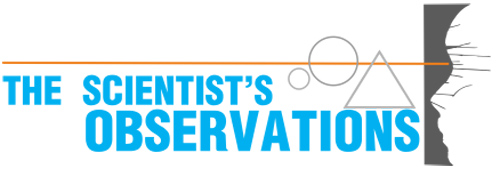
In the first or second year at Zurich, Einstein read Ernst Mach’s ‘Science of Mechanics’, given to him by a senior Italian engineering student at ETH, Michelangelo Besso, who remained his friend for life. This book shook Einstein’s dogmatic faith in mechanics as the final basis of all physical thinking. Einstein was influenced by Mach’s independence and his skepticism in following the accepted views. To Mach, Isaac Newton’s expressions of “absolute space” and “absolute time” were meaningless since they were impossible to define. Mach’s criticism of the more than two centuries old Newtonian framework prepared Einstein’s mind for the later great things.
Einstein loved the “physics” laboratory, for he was fascinated by the direct contact with experience. As a student, he was at a time when Physics was about to be revolutionized. Theoretical Physics which was taught by Heinrich Weber in ETH attracted him. However, he was dismayed that Weber plodded the knowledge of science only for the sake of examination, instead of making the students explore and investigate the natural world. Einstein’s spirit resented this. Moreover, Weber did not touch upon Maxwell’s theory of electromagnetism. At that time, Maxwell’s theory of electromagnetism was “the most fascinating subject” for Einstein and “was symptomatic of the radically new ideas which were about to transform the face of Physics.”
It is at such times that we realize the importance of self-study. The works of great people preserved for posterity in the books they have written, come in handy for the deep study of any subject. Einstein too started to read and study for himself.
He used his spare time, “in the main in order to study at home the works of Kirchhoff, Helmholtz, Hertz etc.” He also read the works of scientific revolutionaries like Maxwell, Henri Poincare and Ernst Mach. Einstein successfully completed his studies at the ETH with the subject teacher diploma for Mathematics and Physics in July 1900.
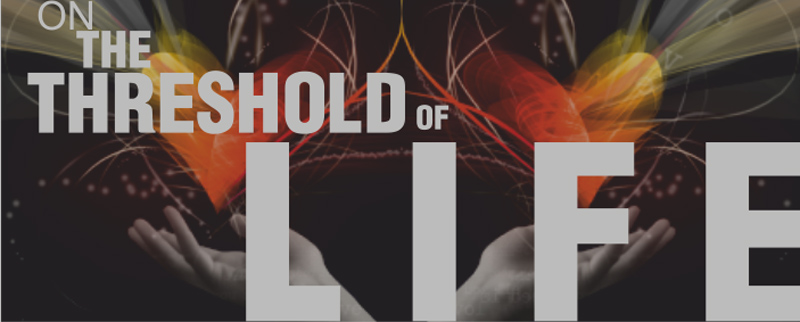
Einstein completed his academic years at the ETH but disliked the examination pattern of study. He got an overall mark of 4.91 out of 6.00 on graduation. Though he was qualified for a post in ETH and his tutors had employed many other graduates, Einstein was deliberately overlooked due to his ‘troublesome’ questioning attitude. One of Einstein’s professors was hostile to him and this worked against him in getting the usual university assistantship. Hence, he could not take up any scientific study for an entire year after his finals.
Yet, it must be said that this situation was not entirely unexpected, for Einstein was a self-willed and rebellious youth. Einstein’s failure to gain a footing in ETH resulted in the Koch relations in Genoa ending his allowance. On account of this fallout, he now had to stand on his own feet, having graduated and come of age. He was 21. Thus Einstein at the end of his studies found himself, as he said, “suddenly abandoned by everyone, standing at a loss on the threshold of life.”
Now what next? Einstein joined his parents in Milan and in September 1900 decided to look out for a job. He started writing letters to the important people he knew, asking for employment. He came back in Zurich to work temporarily with Professor Alfred Wolfer, director of the Swiss Federal Observatory, who had taught him Astrophysics and Astronomy. In 1900, Einstein had written a paper “Folgerungen aus der Kapillaritatserscheinungen” (Deductions from the Phenomena of Capillarity). It was published in the ‘Annalen der Physik’ (Annals of Physics) in its December issue, raising Einstein’s hopes of recognition for his research.
Since some years, one of Einstein’s objectives had been to acquire a Swiss citizenship, and this required proof of a fixed job. He had kept this objective in mind and had saved 20 francs a month during his student days for the process of his Swiss naturalization costs. After having the required cash, residential proof and other requirements, he made his formal application to the Zurich authorities, along with a testimony of his good character and proof of unbroken residence since October 1896.
On 21st February, 1901, the Zurich authorities did their official work of a round of examination and rigorous questioning; they found him to be innocent and harmless and granted him Swiss citizenship. Like other young Swiss men over 18, Einstein became due for the three-month military service, but was rejected due to flat feet and varicose veins. Einstein thought highly of the Swiss populace; he found them more humane and peaceful and hence he was always proud of his status as a Swiss citizen.
Einstein came back to his parents in Milan in March 1901. He applied for a job, attaching with it a copy of his thesis and sent it to Wilhelm Ostwald, the German physical chemist doing pioneering work on the principles of catalysis, and also to Kamerlingh Onnes, the Dutch physicist, who was probing the depths of ultimate cold in Leiden. But he received no reply from either of them.
In May 1901, Einstein finally got an offer to teach Mathematics in a technical school at Winterthur, as stand-in for two months. After that, he was again back in Zurich searching for a job. He read in a Zurich newspaper about the requirement for a teacher and with his former ETH fellow student, Conrad Habicht’s reference, he acquired the post in a boarding school in the little town of Schaffhausen. From September, he held this job for a few months and then was back in Zurich again. He also completed a thesis on the kinetic theory of gases for his Ph.D, and sent it to the University of Zurich in November.
In December 1901, Einstein applied for a post at the Swiss Patent Office at Berne. Its director, Herr Friedrich Haller was a personal friend of Herr Grossman (the father of Einstein’s friend, Marcel Grossman of the ETH). This helped in his being favourably considered for the job. During this time, Einstein and Mileva Maric had a daughter named Lieserl who was born out of wedlock in January 1902.
In the summer of 1902, Einstein arrived in Berne, a few weeks prior to his appointment as a Patent Officer. He withdrew his thesis which he had sent earlier. Since he had to sustain his funds till his first payday, he decided to work as a private tutor for Physics and advertised in a local newspaper for the same. Maurice Solovine, a young Rumanian student at Berne University became his first pupil. About his meeting with Einstein, Maurice recollects that he was “struck by the extraordinary brilliance of his huge eyes.”
In the course of their interaction, Einstein and Maurice realized their ideas were very similar and so would spend time together reading the standard works and discussing the problems therein. Later, they were joined by Conrad Habicht who came to Berne to continue his studies in Mathematics.
Conrad was an old friend of Einstein from his Zurich days. With the three together, the teacher and the pupil became one, and lessons ran into lengthy discussions on Science and Philosophy. Works of Karl Pearson, David Hume, Ernst Mach, Henri Poincare, Spinoza and Riemann were gorged on. More students joined them later on, though Einstein was the natural leader of this self-styled group named as the “Akademie Olympia” (Olympia Academy), due to his seniority and force of character.
In the midst of all this, Einstein was called for an interview for the post of Technical Expert (Second Class) at the Swiss Patent Office, on 23rd June, 1902. However, after the interview, he was appointed as Technical Expert (Third Class), due to lack of technical training. His starting salary was fixed at 3,500 francs a year. Einstein chose to make the most of his job, using it as a base for his exploration of the nature of the physical world in his leisure time. This was the start of his seven-year career there.
Einstein’s work involved among other things, rewriting the vague applications of the inventors’ to give them legal protection. This work required an ability to decipher the basic idea or ideas upon which an application was laid, and this called for perceptive analysis and intuition. His observation and analysis were thus sharpened at the Patent Office where he had to sort, read and put into writing the specifications for the many appliances of the inventors like cameras, typewriters and other engineering devices. Einstein described the director of the Patent Office as “more severe than my father, he taught me to express myself correctly.” Talk about getting polished!
For Einstein, the Patent Office was a routine release for his creative genius. On taking up the post, he had written to his friend Habicht, that it gave him “besides eight hours of work…..eight hours of idleness plus a whole Sunday.” That meant for him ample free time to…discover the laws of the physical world…what else? Einstein produced much of his remarkable work during his first regular job at the Patent Office.
Einstein’s father had been sick past many years and he passed away in Milan on 10th October, 1902 due to heart failure. Later, being a man of principles, Einstein got married to Mileva Maric on 6th January, 1903, though both their families were opposed to it. In the same year, Einstein’s posting at the Swiss Patent Office became permanent, but he was denied promotion for he had to still fully master the machine technology. It is said that Lieserl, Einstein and Mileva’s first child (born out of wedlock) was probably given up for adoption in Hungary in the autumn of 1903. A year later, on 14th May, 1904, Einstein and Mileva’s first son, Hans Albert Einstein, was born in Berne, Switzerland.

1905 was a dazzling year for Einstein. On 30th April, 1905, Einstein along with Alfred Kleiner, Professor of Experimental Physics, completed his doctoral thesis. Thus, at 26 years of age, Einstein got his Ph.D degree from the University of Zurich, Switzerland. His dissertation was entitled “Eine neue Bestimmung der Moleküldimensionen” (A New Determination of Molecular Dimensions). In the same year he got published many of his revolutionary scientific works in the “Annalen der Physik”, thus entitling the year 1905 as Einstein’s ‘annus mirabilis’ (miracle year). His path-breaking papers which were to bring him world-wide fame dealt with the photoelectric effect, Brownian motion, special theory of relativity and the mass-energy equivalence formula “E=mc2”.
His first paper “On a Heuristic Viewpoint Concerning the Production and Transformation of Light”, explained the phenomenon of the photoelectric effect. In this paper, Einstein presented his idea that under certain conditions radiant energy (light) behaves as if it is made up not of waves but of particles of discrete energies “quanta”. An equation for the photoelectric effect was presented by him, in which electrons are ejected from a metal surface exposed to light. Einstein proved that the electrons are ejected in units, or “quanta”, like bullets from a gun and not in a constant stream. At that time, this was a great prediction. The theory of the photoelectric effect played an important role in the development of modern technology. This paper was to fetch him the Nobel Prize for Physics sixteen years later.
Einstein was very impressed by Thermodynamics and was interested in Statistical Mechanics. He had worked on the foundations of both from the years 1902 to 1904. From this work sprung forth, his second paper which experimented with the theory of heat and gave proof of the existence of atoms. Einstein’s second paper was named “On the Motion of Particles Suspended in a Stationary Liquid According to the Molecular Kinetic Theory of Heat”, which explained the Brownian motion. Brownian motion (one of the most direct proofs of the existence of atoms) was initially observed by Scottish botanist Robert Brown in 1827. He had concluded from his observations under the microscope that small particles like pollen dust, suspended in a liquid such as water, undergo continuous, irregular motion. Einstein too derived from his own instinct and observation that such a motion must exist. According to his thought process, the atoms in the liquid collide with the suspended particles and set them into motion. In time, the motion of the particles experiences a forward movement. It was proved by Einstein that this forward movement of the particles is directly related to the number of atoms per gram of atomic weight.
Einstein’s third paper “On the Electrodynamics of Moving Bodies” which focused on the special theory of relativity, ultimately catapulted him into the annals of history. He formulated his special theory of relativity in an attempt to reconcile the laws of mechanics with the laws of the electromagnetic field. This dissertation of around nine thousand words holds that measurements of space and time vary according to the conditions such as the state of motion of the observer. Einstein always emphasized that the special theory of relativity “was not speculative in origin; it owes its invention entirely to the desire to make physical theory fit observed facts as well as possible.”
Whenever Einstein had to present the theory of relativity to the layman, he always took recourse to analogies with trains, elevators and ships. He also had a relatively simple explanation for it :
“When you are courting a nice girl, an hour seems like a second. When you sit on a red-hot cinder, a second seems like an hour. That’s relativity.”
The fourth paper of his ‘Annus Mirabilis’ was “Does the Inertia of a Body Depend Upon Its Energy Content?” This paper contained the most famous outcome from Einstein’s special theory of relativity: the derivation of the mass-energy equivalence formula E=mc2.
This formula developed by Einstein showed that mass and energy are two parts of the same thing. Here, in this mathematical equation, E stands for energy, m for mass and c for the speed of light in a vacuum (ca.300,000 km/s).
According to the formula, Energy (E) equals mass (m) times the speed of light (c) squared. The essence of the formula is that mass is just one form of energy, and that the velocity of light being what it is, a very small amount of mass is equivalent to a vast amount of energy. This explained why electrons weighed more when moving than at rest, as a natural result of their speed, and also how the sun and the stars radiated a large amount of light and heat by losing only a fragment of mass.
Most people know this genius through this equation about the nature of energy. As Einstein himself has said,
“Politics is for the present, but an equation is for eternity.”
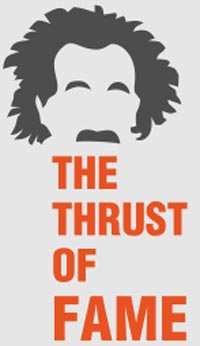
With the publication of his research papers, Albert Einstein came to be recognized as a leading scientist. These papers revolutionized Physics and the attention of the scientific community was thrust upon him. In April 1906, Einstein was promoted to Technical Expert (Second Class) at the Patent Office. Nearing the end of 1906, he published his paper on the quantum theory of the solid state, “Planck’s Theory of Radiation and the Theory of Specific Heat.”
He became more and more famous and universities vied with each other for his services. In 1908, Einstein was appointed Privatdozent (Private lecturer) at the University of Berne. In July 1909, Einstein was awarded his first honorary doctorate at the University of Geneva. Due to the numerous offers from universities, Einstein decided to devote his time entirely to the scientific path that he so loved, and to that end, resigned from his job at the Patent Office in October 1909. In the same month, he got his first full-time job in Physics when he became an “Ausserordentlicher Professor” (assistant professor) for Theoretical Physics at the University of Zurich. There, he came to be known as ‘Professor Extraordinary’. Though he became very famous, Einstein retained his simplicity throughout his life.
By this time, Einstein’s sister, Maja, had also graduated from the University of Berne. The following year in 1910, she got married to Paul Winteler (the son of Professor Jost Winteler; the head of “Kantonsschule” at Aarau). Also, Paul’s sister, Anna, got married to Einstein’s close confidante, Michelangelo Besso. Einstein’s second son, Eduard, called ‘Tete’, was born in Zurich the same year on 28th July. With all these happy events, the cup of joy in Einstein’s family overflowed.
In the year 1911, Einstein became the Professor of Theoretical Physics at Carl-Ferdinand University in Prague. In October 1911, Einstein attended the exclusive first Solvay Conference (a prestigious meeting of top scientists, established by Belgian chemist and industrialist Ernest Solvay) in Brussels, Belgium. Einstein, at 32, was the youngest among eighteen scientists from around Europe, which included Marie Curie, Henri Poincare, Ernest Rutherford, Max Planck, Heinrich Rubens and Paul Langevin among others. The final talk at the conference was given by Einstein. Einstein later returned to serve as Professor (for theoretical Physics) at the ETH in Zurich, in August 1912. Here, along with Marcel Grossman, the Mathematics professor, Einstein cooperated and worked on the basics of the general theory of relativity. In the year 1913, two well-known scientists, Max Planck and Walther Nernst approached Einstein in Zurich with the offer of a lucrative research professorship at the University of Berlin in Germany and also a full membership to the Prussian Academy of Science.
In 1914, Einstein took up their offer of a research post and moved to Berlin in April that year. He became a German citizen. He was appointed as the Director of the Kaiser Wilhelm Institute of Physics and became a Professor at the Humboldt University of Berlin. A special clause in his contract freed him from most teaching obligations. Einstein also became a member of the Prussian Academy of Sciences. Einstein said, “The Germans are gambling on me as they would on a prize hen. I do not really know myself whether I shall ever really lay another egg.” His wife and two sons, Hans Albert and Eduard came a month later to Berlin. Einstein gave his first inaugural address at the Prussian Academy of Sciences on 2nd July. Though his professional life advanced, his home life was troubled and his family went back to Zurich in July 1914.
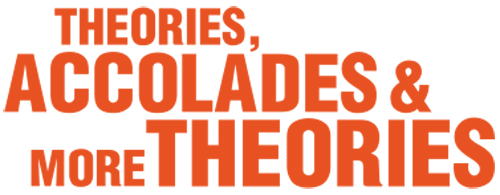
When the First World War broke out on 1st August, 1914, Einstein supported the formation of a pacifist group, and became a member of the “Bund Neues Vaterland”, rejecting the aggressive war aims of Germany. He also signed the “Manifest an die Europäer” (Manifesto to the Europeans). Further on, Einstein, along with J.W. de Haas made experimental tests to the gyromagnetic effect (called the Einstein-de Haas-effect).
Einstein struggled hard for some years to extend the theory of Special Relativity. He worked on the creation of a general theory of relativity, which is but a generalization of the special theory of relativity. After spending almost a decade in imaginative thoughts which ended in frustration and darkness, Einstein completed his general theory of relativity. In Einstein’s words, it later dawned on him only gradually after years of independent scientific work that “the approach to a more profound knowledge of the basic principles of Physics is tied up with the most intricate mathematical methods.” A new understanding of gravity was reached which overturned the prescribed notions of space and time.
In March 1916, he published his paper on the general theory of relativity named, “Die Grundlage der allgemeinen Relativitätstheorie” (The Formal Foundation of the General Theory of Relativity) in the ‘Annalen der Physik’. During this period, Einstein also contributed to the problems of the theory of radiation and statistical mechanics. Einstein’s general theory of relativity predicted the perihelion motion of mercury, the gravitational red shift and also the deflection of light in a gravitational field. Einstein had total conviction that light deflection by the gravitational field of the sun could be observed during a total solar eclipse. Einstein considered the general theory of relativity as his masterpiece.
“The years of anxious searching in the dark, with their intense longing, their alternations of confidence and exhaustion and the final emergence into the light – only those who have experienced it can understand it.”
There was a time when asked about his laboratory, Einstein would point to his head and as regards his tools, he would point to his fountain pen. Einstein however did emphasize that ‘observed facts’ formed the real basis of much of his work, and sometimes his inspired intuition gave rise to the coordinating theory which explained them.
On 5th May, 1916, Einstein succeeded Max Planck as the president of the “Deutsche Physikalische Gesellschaft” (German Physical Society). He continued working on his theories and in December 1916 he brought out his most famous book, “Über die spezielle und die allgemeine Relativitätstheorie, gemeinverständlich” (On the Special and General Theory of Relativity, A Popular Account). His health however started to take a toll on him, consumed as he was with work most of the time. In 1917, Einstein became sick many a times, and also suffered from a liver disease and stomach ulcer. During this “down” period, Elsa, his cousin, took good care of him. Not one to be idle for long, Einstein soon wrote a work on Cosmology.
Professionally, Einstein’s career graph was soaring. On 1st October, 1917, Einstein became the director of the ‘Kaiser Wilhelm Institute for Physics’. In 1918, with the collapse of Germany, Einstein’s involvement in politics rose and he supported a new progressive party. On the home front, having lived apart for five years, Einstein and Mileva later got divorced on 14th February, 1919, due to incompatibility rather than conflicts.
Einstein at this time also became involved in Zionism. In early 1919, Zionist leader Kurt Blumenfeld visited him and they had discussions on Zionism. Einstein said, “I am, as a human being, an opponent of nationalism, but as a Jew, I am from today, a supporter of the Zionist effort.” He also advocated the creation of a new Jewish University in Palestine (the later Hebrew University in Jerusalem).
By now, Einstein had become a symbol of scientific intelligence and thought of at its highest. During the solar eclipse of 29th May, 1919, on the volcanic island of Principe in the Gulf of Guinea in western Africa, a British expedition led by English astronomer Sir Arthur Stanley Eddington made astronomical measurements, recorded their observations and confirmed Einstein’s prediction about light deflection by the gravitational field of the sun. In Sobral, Brazil, a second expedition led by Andrew Crommelin observed this eclipse and confirmed the same.
While all this was happening cupid struck between Einstein and his cousin, Elsa Lowenthal and the two got married on 2nd June, 1919. Elsa already had two daughters, Ilse and Margot from her first marriage, and together, the family moved to Berlin. On 6th November, 1919, the official result of the above expeditions was announced in a joint meeting of the Royal Society and the Royal Astronomical Society in London. The president of the Royal Society, Joseph John Thomson stated, “This is the most important result related to the theory of gravitation since the days of Newton…..This result is among the greatest achievements of human thinking.”
The perihelion motion of mercury and the gravitational red shift were also confirmed with further experiments. With these glorious confirmations of his general theory of relativity, Einstein became famous not only in the scientific community but across the world even to the lay person. A leading British daily newspaper ‘The Times’ announced in its banner headline on 7th November, 1919 : “Revolution in Science – New Theory of the Universe – Newtonian Ideas Overthrown”.
Einstein’s general theory of relativity was given astounding confirmation from British astronomers. That gravity bends starlight was beyond doubt, and was as predicted by Einstein. The outcome of this was that Albert Einstein became world-famous and invitations and honours poured in from all over the world. Praise, admiration and eulogy for his work were heaped on him in many magazines. He received honorary doctorate degrees from many European and American Universities for his work in the fields of science, medicine and philosophy. He was appointed to a lifelong honorary visiting professorship at the Dutch University city of Leiden in Holland. On 12th November, 1919, Einstein was awarded an honorary doctorate (his only German one) from the University of Rostock. Amidst all this happiness, Einstein suffered a blow when his mother, Pauline, passed away on 20th February, 1920, after a severe illness.

On the political front, the hatred for Jews was growing in Germany. With growing fame, Einstein championed many liberal causes and also the fledgling German republican government. This partly resulted in the anti-Semites strongly criticizing him and his theory of relativity. Nobel Prize-winning physicists Philipp Lenard and Johannes Stark attacked Einstein’s theory of relativity and labeled it as “Jewish physics.”
It was in April 1921 that Einstein visited New York for the first time. The Mayor of New York gave him an official welcome and many receptions were held in his honour. He was invited to deliver lectures at Princeton and Columbia Universities about the theory of relativity. He was also awarded his honorary doctorate there. He also visited the White House in Washington with representatives of the National Academy of Science, and was welcomed by the then President Warren G. Harding. On return to Europe, as the guest of the British statesman and philosopher Viscount Haldane in London, Einstein delivered a lecture at King’s College. He also had the privilege of meeting several renowned intellectuals, scientists and politicians.
Einstein travelled throughout Asia visiting Japan, Singapore and Ceylon in 1922 giving a series of lectures. Thousands thronged the Imperial Palace to watch the arrival of the newly crowned Nobel laureate who had come to meet the Emperor and Empress of Japan. In a letter to his sons, Einstein wrote, “Of all the people I have met, I like the Japanese most, as they are modest, intelligent, considerate, and have a feel for art.”
In 1922, Albert Einstein received the Nobel Prize in Physics “for his services to Theoretical Physics,
and especially for his discovery of the law of the photoelectric effect.” This was with reference to his 1905 paper on the photoelectric effect, “On a Heuristic Viewpoint Concerning the Production and Transformation of Light”.
Later, Einstein became a member of the League of Nations’ International Institute of Intellectual Cooperation (IIIC), which was established with the aid of the French Government, with the aim to promote international cultural or intellectual exchange between artists, scientists, researchers and other intellectuals.
On his return voyage, Einstein visited Palestine for 12 days, getting a tumultuous reception apt for a head of state rather than a theoretical physicist. He was even greeted with a cannon salute at the residence of the British High Commissioner, Sir Herbert Samuel.
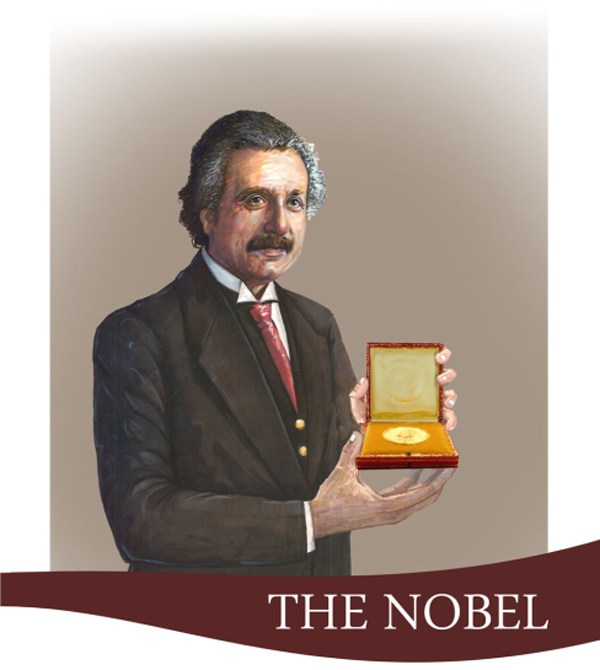
In 1922, when his son Eduard, then a 12 year old, asked his father the reason for his unparalleled fame, Einstein is quoted as saying:
“When a blind beetle crawls over the surface of a curved branch, it doesn’t notice that the track it has covered is indeed curved. I was lucky enough to notice what the beetle didn’t notice.”
Einstein also contributed to the new quantum theory in the year 1924. He wished for a way to unify the theories of electromagnetism and gravity. Along with Indian physicist Satyendra Nath Bose, Einstein discovered and formulated the Bose-Einstein Condensation and had it published near the end of 1925.
Work is good, but overwork has its side effects, and Einstein was overworked most often. He developed a heart disease in 1928, and was strictly advised bed rest for several months. He took almost a year to recover from it. Elsa wished to have a secretary for Einstein, and Helen Dukas applied for the job. She was selected and began work as Einstein’s secretary on 13th April.
The next year Einstein announced a unified field theory; this was just the beginning of a struggle towards a useful theory. He also introduced the new science of cosmology in the 1920s. According to him, the universe was dynamic and forever expanding or contracting. Einstein’s view of the dynamic nature of the universe, received confirmation when in 1929, Edwin Hubble, an American astronomer found that the universe was indeed expanding.

Meanwhile, the political situation in Germany had worsened. The Nazis had become the strongest political party in the 1932 elections. Einstein, back from a trip to the USA, planned to spend half the year in Princeton, New Jersey (at the upcoming Institute for Advanced Study) and half the year in Berlin. During this time, along with Austrian psychologist and physician Sigmund Freud, Einstein wrote “Why war?” which was published in 1933.
There was now a political power shift and Germany’s new chancellor, Adolf Hitler seized power on 30th January, 1933. The same year in March when Einstein and Elsa were returning by ship to Belgium, they got the information that their cottage was raided by the Nazis and Einstein’s small boat had been confiscated. Einstein formally renounced his German citizenship at the German consulate immediately upon reaching Antwerp. The growing hatred against Jews and the attacks on Einstein continued until he resigned from the Prussian Academy of Sciences on 28th March, 1933.
Furthermore, in April 1933, laws barring Jews from holding any official positions including that of lecturing at universities were passed by the new German government. Einstein’s works were targeted by the Nazis and his books were burned. Einstein’s name also featured on a list of assassination targets, with a “$5000 bounty on his head.” He was listed under the phrase “not yet hanged” by a German magazine in a list of enemies of the German regime. >
Einstein did not want to live in Germany under the new Nazi government. He decided to leave the country and never reentered Germany. To him, “War was a disease…… [and] he called for resistance to war.” But after Hitler assumed power in Germany in 1933, Einstein stayed away from strict pacifism and warned the political leaders of the world to be ready for German aggression. He also helped to rescue the victims of the Nazis.
After residing in Belgium for some months, Einstein temporarily lived in England. His physicist friend, Max Born, also emigrated from Germany and lived in England. Einstein received offers from many European universities including the prestigious Oxford University, but he was quite undecided. He had on several earlier occasions in early 1933, visited the California Institute of Technology in Princeton, New Jersey, USA. So Einstein and Elsa immigrated to the United States and lived in Princeton in a house they bought in 112 Mercer Street in September. His step-daughter Margot and his secretary Helen Dukas also lived with them. He found a favourable work-life situation here and took up the offer to join as a Professor of Theoretical Physics at the newly established Institute for Advanced Studies there. This was in October 1933. John von Neumann (a Hungarian-American mathematician and polymath) and Kurt Godel (an Austrian American logician, mathematician and philosopher) were among the four first selected at the Institute along with Einstein. Einstein developed a close friendship with Godel and they would often discuss their work during long walks.
One of Einstein’s step-daughters, Ilse Kayser-Einstein died in 1934 from unknown reasons. In the following year (1935), he decided to be a permanent resident of the United States and applied for US citizenship. Many other Jewish scientists, some of them Nobel laureates and professors of Theoretical Physics fled to America from Germany due to the prevailing circumstances there. Einstein wrote to a friend on this, “For me the most beautiful thing is to be in contact with a few fine Jews – a few millennia of a civilized past do mean something after all.”
Marcel Grossman, Einstein’s friend, died on 7th September, 1936. In the same year, his wife, Elsa was diagnosed with heart and kidney problems and she passed away in December 1936. After her demise, Helen Dukas, his secretary, also served as his housekeeper. His personal disasters notwithstanding, Einstein along with his colleague at Princeton University, Polish theoretical physicist Leopold Infeld, co-authored the book “The Evolution of Physics” and had it published in 1938. The political situation in Europe forced his sister Maja to move to his house in 1939, and became a comfort for his loneliness. Maja’s husband, Paul, was not allowed into the U.S. due to health issues, hence he stayed back in Geneva with his relatives.

Europe was on war, and with Germany’s attack on Poland, World War II broke out on 1st September, 1939. In the same year, eminent physicist Leo Szilard, along with a few other Hungarian scientists, alerted Washington of the ongoing Nazi atomic bomb research, but the warnings were not heeded. Einstein too thought that Americans had to be alerted to the possibility of Germany winning the race to build an atomic bomb, and to the willingness of Hitler to resort to such a weapon. So on 2nd August, 1939, a letter informing and warning US President Franklin D. Roosevelt of the possibility of the Germans trying to build nuclear bombs was signed by Einstein.
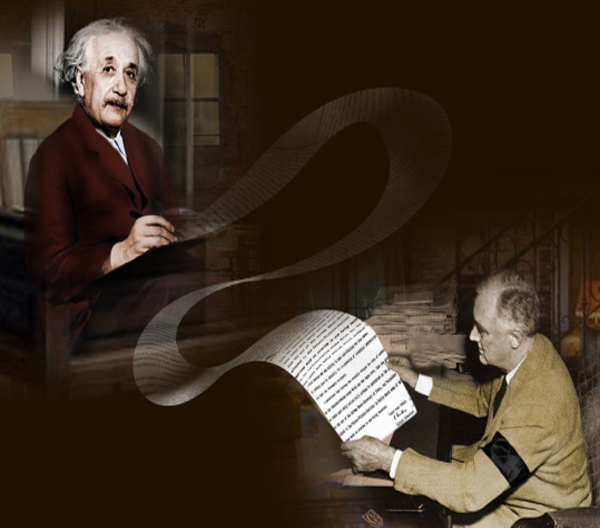
The letter spoke about the scientific advance of the Germans and the possibility of German leader Adolf Hitler becoming the first to have atomic weapons. It also recommended the U.S. government to get involved in uranium research and associated chain reaction research. The following year, on 1st October, 1940, Einstein became an American citizen. However, he also kept his Swiss citizenship.
The letter signed by Einstein was arguably the key stimulus for the U.S. adoption of serious investigations into nuclear weapons on the eve of the U.S. entry into World War II. Einstein’s letter and his meetings with President Roosevelt resulted in the U.S. entering the race to develop the bomb, by initiating the ‘Manhattan Project’, which began in November 1941. On 7th December, 1941, with the Japanese aggression on Pearl Harbour, the American Navy Centre, the US had to enter the war fully.
There was an all-out effort for the creation of the atomic bomb. During the war, the U.S. became the only country to successfully develop an atomic bomb. In 1944, Einstein hand wrote his 1905 theory of relativity and allowed its auction. The handwritten theory fetched him six million dollars on sale, which he donated to the effort to win World War II.
The tragedy of the creation of the atomic bomb was, that Albert Einstein’s famous equation E=mc2 was finally demonstrated in the most terrifying way, by destroying the Japanese cities of Hiroshima and Nagasaki, in the final stages of World War II in 1945. Humanity suffered and how!
Einstein retired from his professor’s post at Princeton in 1945. Post-retirement too, he continued to work towards the unification of the basic concepts of Physics.

Love, peace and compassion are the greatest harbingers of happiness in life. Without these values, humanity would definitely not be able to survive. In the Hiroshima and Nagasaki bombings, both cities were wiped out entirely and even vegetation could not survive, such was the effect. To Einstein, the horror of these bombings was so much that for a long time he could only utter “horrible, horrible” at the consequences.
Einstein told Linus Pauling, his old friend, “I made one great mistake in my life – when I signed the letter to President Roosevelt recommending that atom bombs be made; but there was some justification – the danger that the Germans would make them...”

After the disaster of World War II, Einstein advocated civil rights. In 1946, in a public letter to the United Nations, he proposed the establishment of a world government as the only way to achieve continuous lasting peace. He became a leading figure in this movement by becoming the head of the Emergency Committee of Atomic Scientists. Besides these, Einstein also supported many other causes like the United Nations and nuclear disarmament. He was also a member of the National Association for the Advancement of Colored People (NAACP) at Princeton and campaigned for the civil rights of African Americans.
Einstein appreciated the “meritocracy” in American culture, which encouraged an individual to say and think what they pleased, which in turn encouraged more creativity, a valuable trait. In 1946, he termed racism as America’s “worst disease”. He further stated, “Race prejudice has unfortunately become an American tradition which is uncritically handed down from one generation to the next. The only remedies are enlightenment and education.”
Maja, Einstein’s sister, suffered a stroke in 1936 and was bedridden. His first wife, Mileva Maric, died in Zurich on 4th August, 1948. In December of the same year, after having been diagnosed with a big aorta aneurysm, Einstein underwent abdominal surgery conducted by Dr. Rudolph Nissen. He was discharged in January 1949. After recovery, Einstein published his work, “Autobiographic Notes”.
Einstein’s secretary Helen Dukas and Dr. Otto Nathan were made joint executors of his will which he declared in March 1950. He bequeathed his entire written legacy to the Hebrew University in Jerusalem. He also got published a collection of his non-scientific essays and speeches of the past twenty years titled “Out of My Later Years”. Meanwhile, his sister Maja passed away in Princeton on 25th June, 1951. Though he took every other setback in his life with amazing endurance, the death of his sister affected Einstein deeply, since they were very attached to each other.
Israel’s Prime Minister David Ben-Gurion offered Einstein the Presidency of Israel, after the death of its first president, Chaim Weizmann in November 1952. Whilst presenting the offer, Abba Eban, Israel’s ambassador in Washington, explained that “the offer embodies the deepest respect which the Jewish people can repose in any of its sons.” Einstein though deeply moved, could not accept the offer, since politics was not on his wish list and he was no longer in the best of his health.

Einstein was affiliated with the Institute for Advanced Study in Princeton till the end. The last years of the world-famous scientist were spent in Princeton reclusively. Here too, he kept searching for a true unified field theory for a deeper understanding of nature, which was unsuccessful.
Michele Besso, Einstein’s friend, died in Geneva on 15th March, 1955. A week prior to his death, Einstein agreed to have his name appear on a manifesto (Einstein-Russell-Manifesto) calling for all nations to do without nuclear weapons. On 15th April, 1955, Albert Einstein collapsed at his home, due to internal bleeding caused by the rupture of an abdominal aortic aneurysm. He was brought to University Medical Centre at Princeton but he refused surgery for he felt that he had done his life’s work and now it was his time to leave. He did not wish to prolong his life artificially. He died on the morning of 18th April, 1955 in the hospital. He was 76 years old.
The celebrated scientist that he was, Einstein had an indescribable aura surrounding his high intelligence quotient. Hence, it was perhaps ‘natural’ that during autopsy, the pathologist of Princeton Hospital, Thomas Stoltz Harvey removed his brain for preservation, for neuroscience of the future to discover what made his brain so different, so intelligently special?
Einstein’s remains were cremated the same day as per his wish and a modest funeral service was held in his honour. About two weeks later, his ashes were scattered at an undisclosed location.

Albert Einstein is regarded as the original genius. He was a practical and philosophical person whose ideas stemmed from his great intellectuality.He was both attractive and charismatic; the luminous eyes, the wild white hair, all added to his aura and his mad genius image.
In his technical language, the universe was four-dimensional. He seemed to have clarity regarding the problems of physics and was determined to find solutions to solve them. He devised his own strategies and concepts to reach his goal. His major achievements were regarded by him as stepping-stones towards further advancement. His attitude was what made him much more than a mere scientist. In reply to a query in later life as to whom he attributed his talents, Einstein replied, “I have no particular talent. I am merely extremely inquisitive. So I think we can dispense with this question of heritage.”
Albert Einstein had a marvelous memory in relation to scientific matters. But he was not able to recollect well enough other mundane matters like his childhood days, the beginnings of his foray into science and his development. He was absent-minded but only about those things that did not matter to him.
Einstein was a scientist first and foremost. His priorities were always – first research, second Einstein. He himself acknowledged to his close confidante, Michelangelo Besso that he was somewhat cold and something of a tough nut. He derived great satisfaction from his work which was a lifelong dedication for him. Bertrand Russell, British mathematician and philosopher, once wrote of Einstein, “Personal matters never occupied more than odd nooks and crannies in his thoughts.”
Even though Einstein had the pleasure of being in the company of women all his life, he avoided wasting his energy in normal passions and failed to be swept off his course in life. Einstein was a person determined to keep first things first, and relinquished his position as a human. Physics was his main attraction – the amazing, wonderful science of Physics. Everything else came later.
Einstein, being famous, also attracted the semi-charlatans, hangers-on and the adorers. In his lifetime, he corresponded with many people; scientists, authors, statesmen, artists, crowned heads, and many unknown people and children who were scientifically roused and looking for help. Children of all ages wrote to him; some asked about his looks, some for his autograph, and some congratulated him on his birthday. Some even gave him some sound advice – a little girl said he ought to have a hair cut so he could look better, while others turned to him for advice for their problems. Einstein willingly answered all these letters. In reply to a little girl’s difficulties in mathematics, Einstein wrote:
“…..Do not worry about your difficulties in Mathematics. I can assure you mine are still greater.”
Einstein’s theoretical concepts and inventions have paved the way for future scientific researchers. The luminous life of this great man is a beautiful example of the practical application of curiosity and imagination. Now how’s all that you would say? Well, the dual concepts of curiosity and imagination give rise to further research and knowledge which enhances our creativity and the outcome is fabulous if we persist on our chosen path. Start right away by asking questions …What? Why? How? You could stumble on to something great!

Biography of Albert Einstein | 2 Comments >>
2 --Comments
Thanks for this post
Leave Comment.
Your email address will not be published. Required fields are marked.
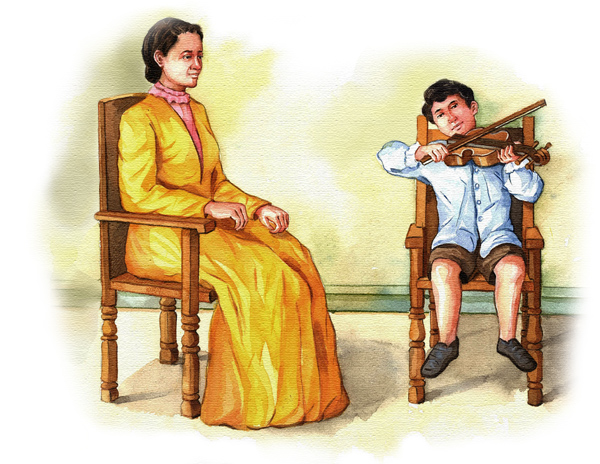
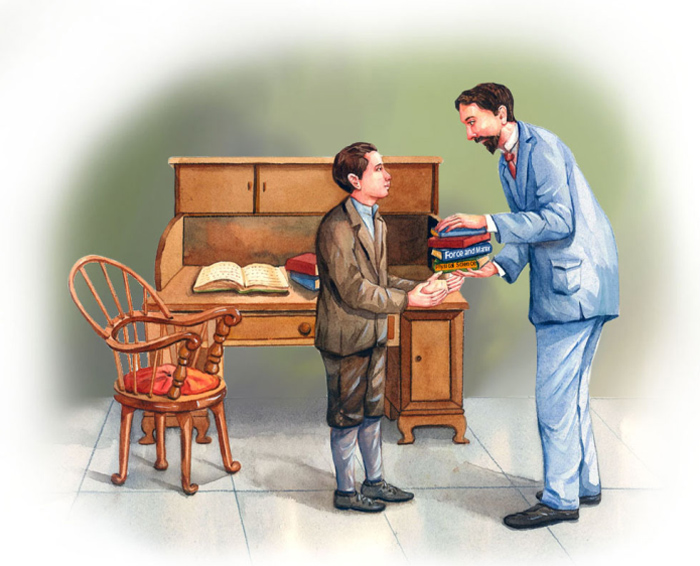
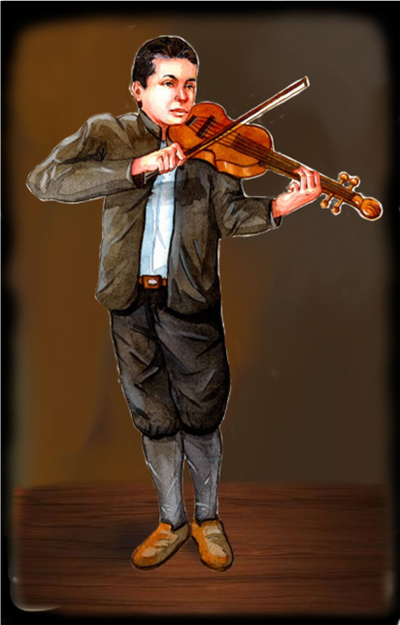
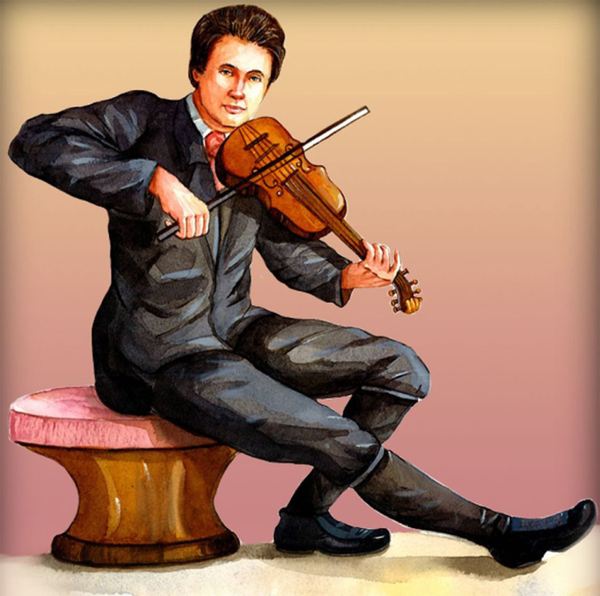
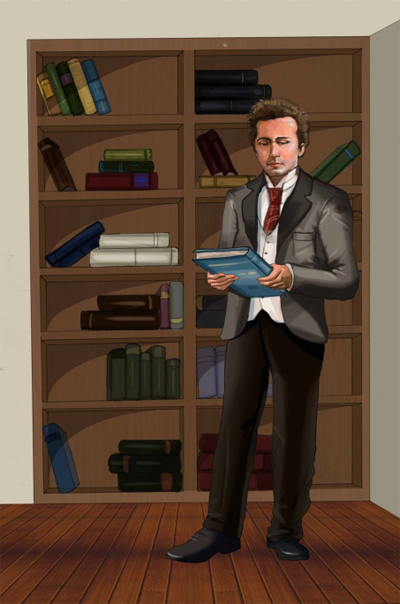
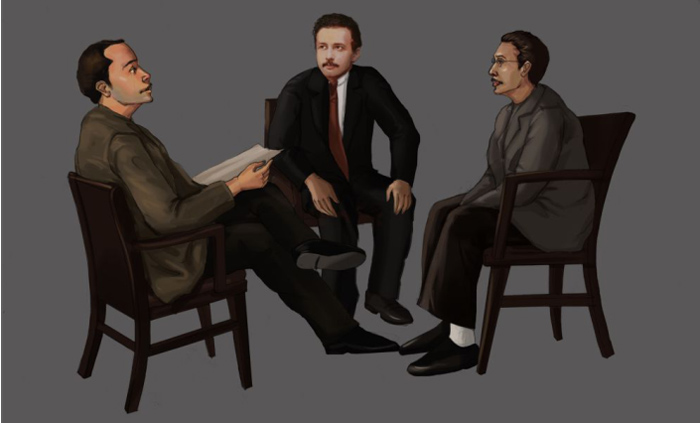
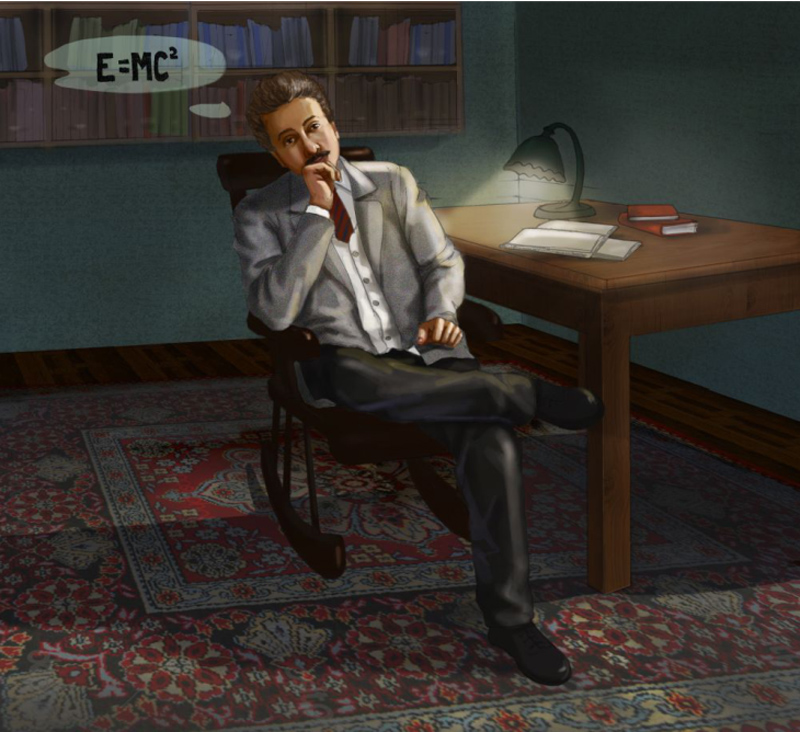
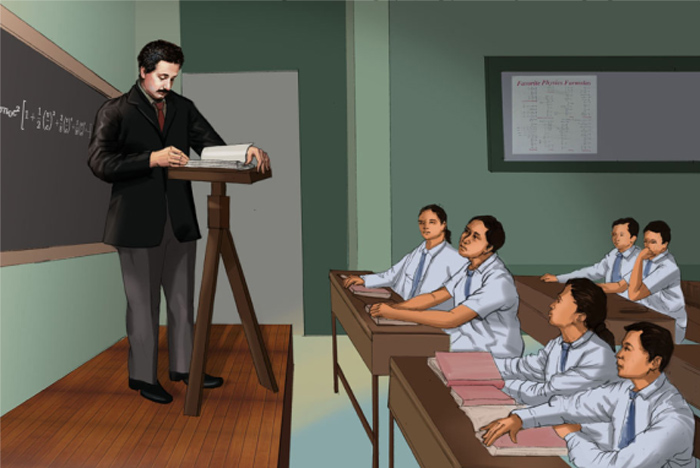
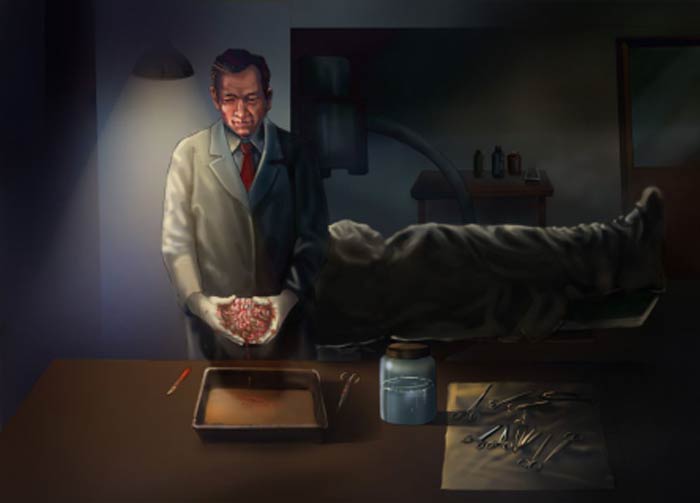


better content than wikepedia... expecting more..